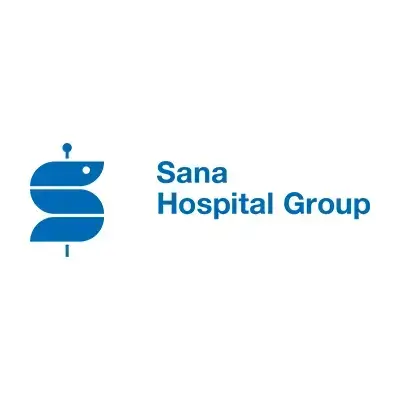Common Types of Neuro Diseases – Part 2 – Cerebrovascular Conditions

In continuation on our series on Neurological Disease, this segment discusses Cerebrovascular Conditions.
Cerebrovascular conditions and events tend to be the ultimate leading causes of death worldwide. According to a WHO report (2006), 85% of mortalities from neurological conditions were attributed to cerebrovascular diseases, with the rest being relatively little by comparison.
Cerebrovascular diseases consist of all conditions characterized by interruptions to the brain’s oxygen supply. Each type represents either damage to or a malfunction of the cerebral vascular system and may be spontaneous, episodic or progressive. Nearly all forms of cerebrovascular conditions are symptomatic of atherosclerosis, in which the arteries are prone to chronic damage due to their narrowing (stenosis)[1]. In this respect, cerebrovascular diseases are linked to cardiovascular diseases with an emphasis on blood supply to the brain.
Types of Ischemia
Interrupted oxygen supply to the brain is also referred to as ischemia or an ischemic event. Those with cerebrovascular conditions are prone to chronic ischemic events. The main types of ischemia are discussed below.
Stroke
A stroke is the most common outcome of an ischemic event within the brain and is sometimes used interchangeably with the word ischemia. The vast majority (85-87%) of all strokes are ischemic, which means that they are the result of blocked blood flow to the brain. The other kinds of stroke are hemorrhagic by nature and are discussed separately under hemorrhages. In the US, stroke is the fifth leading cause of mortality. Many individuals suffer from strokes and survive, however they remain disabled for life thereafter.
The underlying mechanism of a stroke is some event that causes a loss of oxygen, ATP (energy) production and failure of the sodium-potassium pump. This causes the charge of neuronal cells to extinguish (depolarize), leading to an influx of calcium into the cell which increases inflammation, acidity and free radical production. Ultimately the cell swells and bursts, dying off in the process. When a cell dies as a result of ischemic damage, it can trigger other surrounding cells in the area to die off as well and result in varying degrees of neuronal loss. [2]
When a stroke occurs, it damages the parts of the brain experiencing oxygen deprivation and results in symptoms based on the area being damaged. For example, slurred and incoherent speech is a consequence of having a stroke that damages brain areas coordinating speech movements, language and comprehension. A stroke typically lasts longer than 24 hours and may or may not resolve spontaneously without adequate treatment.
Types of Ischemic Events
Ischemic events or strokes are divided into subtypes depending on how oxygen supply is disrupted and where the problem is localized.
They can manifest as a result of three main causes that denote three sub-types. These include:
- Embolic Ischemia. When a cerebral artery is blocked by cholesterol or a similar fatty substance, leading to ischemia.
- Thrombotic Ischemia. The blood vessel is typically blocked by a blood clot, which consists of a group of platelets and clotting factors.
- Lacunar Ischemia. A very small blood vessel deep within the brain is blocked, resulting in the formation of a small lesion in the area.
Common sites for strokes and other ischemic events include:
- Carotid strokes. The carotid arteries are large and very important arteries that carry oxygen to the brain, entering on either side of the neck into the head. These are often felt when measuring the pulse rate.
- Vertebrobasilar strokes. These are also arteries that feed into the head via the neck, however they extend from the spinal cord and cannot be used to measure one’s pulse.
If an ischemic event occurs in either of these regions, very serious consequences ensue, such as damage to the hypothalamus, loss of consciousness, loss of physical coordination and many other life-threatening symptoms.
Other important stroke sites are in arteries that branch off the above two, including:
- Anterior Cerebral Artery Stroke. This type affects Broca’s area (auditory function), primary sensory and motor cortex, and the prefrontal cortex. Coordination loss, personality problems, leg weakness and numbness are often symptoms of this condition.
- Middle Cerebral Artery Stroke. This type affects many areas of the brain, including the basal ganglia (a structure involved in coordinating movement and many basic physiological functions). Numbness, weakness and generalized symptoms of stroke are generally the outcome of middle cerebral artery ischemia.
- Posterior Cerebral Artery Stroke. This type of stroke type affects the thalamus, occipital lobe and portions of the temporal lobe. Lack of alertness, low cognitive function and sensory loss are common to this stroke type. Vertebrobasilar events affect the same brain areas and the term is often used interchangeably with posterior cerebral artery ischemia.[3]
- Cerebellar Stroke. Cerebellar strokes affect the cerebellum and result in issues pertaining to movement and balance, such as vertigo, dizziness, clumsiness, nausea and ataxia.
Hemorrhages and Hemorrhagic Stroke
Hemorrhages account for the remaining portion of strokes that are not ischemic (approximately 13-15%) and are the result of internal bleeding inside the brain’s vasculature, leading to oxygen loss and neuronal damage.
- Intracerebral Hemorrhage occurs when an artery bursts in the brain, flooding the area with blood (also known as a hematoma).
- Subarachnoid Hemorrhage occurs in the blood vessels within the subarachnoid space. The subarachnoid space is a connecting cavity in the cranium filled with interstitial fluid that the blood vessels pass through first in order to reach the brain and its deeper compartments.
Cerebral Hematoma
A hematoma is a blood vessel rupture or leakage that causes blood to inappropriately pool in tissues other than the blood stream. Hematomas are the result of hemorrhages.
Cerebral Aneurysm
An aneurysm is a weakening of a blood vessel in the brain, causing the vessel to bulge. Naturally, aneurysms are prone to bursting and this results in an hemorrhagic stroke and/or a hematoma.
Transient Ischemic Attacks
Transient ischemic attacks or TIAs refer to a cerebrovascular condition in which chronic miniature strokes occur. These classically occur in episodes that resolve spontaneously, but over time, can cause accumulative damage to the brain that may result in progressive disability. A transient ischemic attack is not the same as a major stroke as the blood supply to the brain is blocked for a short space of time, typically 5 minutes or less; however they may last up to 24 hours. TIA’s are indicative of future strokes or future TIAs[4].
Traumatic Brain Injuries
Traumatic brain injuries count as a type of ischemic event, which may result in similar symptoms to that of a stroke. Depending on the nature of the injury, parts of the brain are deprived of oxygen due to rupture or blockage. The symptoms of this type of injury may present immediately or only a few weeks to months after the injury occurred. Traumatic brain injuries can be mild, such as hitting one’s head a bit too hard on something or severe, such as surviving a car accident that resulted in excessive cranial damage.
Rare Ischemic Stroke Conditions
Those with the following conditions are prone to chronic strokes or TIA’s:
- Hematologic Disorders including thrombocytosis, dysproteinemia, sickle cell anemia, anemia, and polycythemia
- Fibromuscular Dysplasia
- Carotid Dissections
- Chronic Vascular Inflammation as a result of diseases such as lupus erythematosus, giant cell arteritis, certain systemic infections, and allergic reactions.
Symptoms of Ischemia
Stroke can present with any of the following symptoms:
- Sudden severe headache with no known cause
- Muscle weakness, especially in the arms, legs and face
- Slurring
- Loss of native language fluency and comprehension
- Inability to feel temperature or pain accurately
- Loss of consciousness (particularly during an acute ischemic event)
- Visual field defects such as being unable to see in one or both eyes
- Eye movement irregularities
- Loss of balance and physical coordination (sometimes referred to as ataxia)
- Numbness in parts of or on one side of the body
- Dizziness
- Disorientation or confusion
Some forms of ischemia can also result in personality changes, emotional volatility, physical weakness, incontinence, hallucinations and coma. Strokes may also be fatal. Post-stroke symptoms may also occur, such as being incapacitated, physical or mentally disabled in some way, having cerebral edema (swelling) or seizures. About 15% of stroke patients suffer from seizures after the event and require additional treatment.
Risk Factors
Risk factors for ischemic events are similar to that of cardiovascular disease and heart attacks.
They include:
- Hypertension
- Smoking
- Diabetes
- Obesity
- Hypercholesterolemia
- Atrial fibrillation or some other cardiovascular abnormality or condition
- Drug use, particularly drugs that thicken or thin the blood
Treatment Options
Generally strokes and traumatic brain injuries constitute an emergency and result in immediate hospitalization as the first line of treatment. Depending on the nature of the ischemia, different treatment options are available. The nature of the attack can be assessed using brain scan technology.
The most common stroke treatment would be a thrombolytic drug known as tissue plasminogen activator (tPA). tPA breaks up particles that may be blocking the bloodstream and causing the stroke. Stroke patients that are hospitalized and given tPA within the first 3 hours of the ischemic event stand a better chance of recovering.
Medication works best for ischemic stroke but not for hemorrhage, in which anything that thins blood would be problematic. Timely surgical procedures may be required to deal with hemorrhagic stroke. A stent, metal clip, coil or other medical devices may be inserted into the problem area to resolve the internal bleeding and put an end to the primary cause of the stroke.[5]
Lifestyle interventions may be recommended to prevent future strokes, particularly if they are of a cardiovascular nature, e.g. a result of high cholesterol levels. Regular exercise, consuming a healthy diet and stopping smoking are all common suggestions that can help to improve vascular health.
Rehabilitation after having a stroke may also demand physical or cognitive therapies in order to help re-establish normal neurological function in the affected brain areas.

Sana Hospital Group is one of the largest independent healthcare providers in Germany. With over 50 world-class hospitals and more than 2 million patients yearly, Sana operates leading facilities, among them university hospitals, tertiary care centers, and specialized hospitals to deliver a broad portfolio of top-tier medical care. Whether it is preventive health care, an acute or chronic illness, a planned procedure, or a long-term diagnosis - more than 600 chief physicians, 4,500 medical professionals, and 11,000 nursing staff provide excellent treatment options, world-class medicine, and the best possible medical care.
Sources:
Featured Blogs



